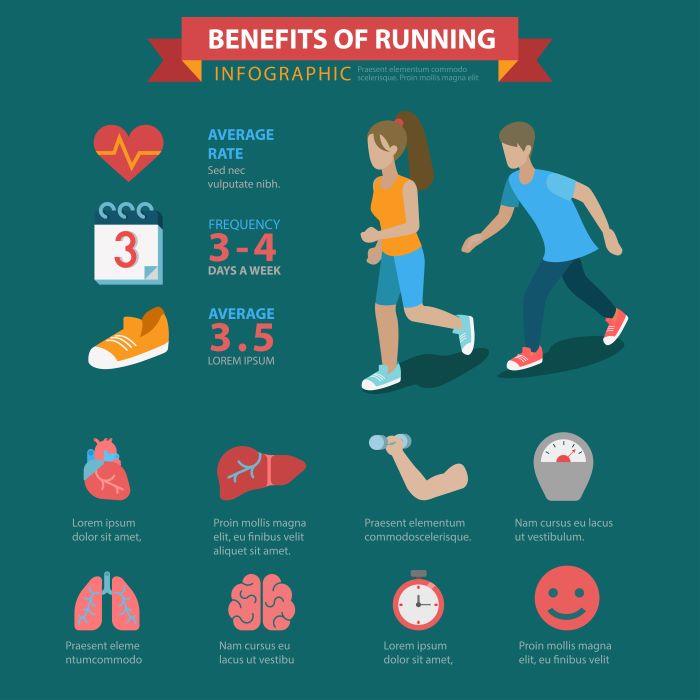When considering how much running fitness you will lose in a month, it’s essential to understand the various factors that can influence this loss. Several elements come into play when determining running fitness, including:
- Duration of Inactivity: The longer you refrain from running, the more fitness you are likely to lose. Research shows that significant declines can start after just a week of inactivity.
- Current Fitness Level: If you are an experienced runner, some loss may be mitigated compared to a beginner. Higher levels of fitness can lead to a slower decline.
- Type of Running: Different running disciplines (e.g., long-distance versus sprinting) may affect how quickly fitness diminishes. Endurance runners might face more significant losses in aerobic capacity.
- Age: As you age, your body’s ability to maintain fitness can decline more rapidly, making regular activity even more crucial.
- Nutrition: Proper nutrition plays a vital role in maintaining fitness. A balanced diet can help preserve muscle mass and overall health during breaks.
Understanding these factors can help you implement strategies to minimize fitness loss during periods of reduced activity. To stay informed and engaged, visit our website to learn more and get started today! Click here.
How Long Can You Pause Running

Determining how long you can pause running without significant fitness loss depends on various individual factors. Generally, most runners can safely take a break for a period of one to two weeks without experiencing substantial declines in fitness. During this time, your body may still retain some cardiovascular endurance and muscle strength.
However, as the pause extends beyond two weeks, factors such as the following become increasingly important:
- Previous Training History: Runners with a solid foundation and consistent training may maintain their fitness levels longer than those who are new to the sport.
- Physical Condition: If you are recovering from an injury, the duration of your break could vary greatly. Listen to your body and consult with a healthcare professional.
- Cross-Training: Engaging in alternative forms of exercise, such as cycling or swimming, can help maintain cardiovascular fitness while allowing your running muscles to rest.
Ultimately, while short breaks can be beneficial for recovery and mental refreshment, extending your pause beyond two weeks may necessitate a gradual return to running to rebuild your fitness levels effectively.
Physiological Changes After One Month

After a month of reduced or no running, your body undergoes several physiological changes that can impact your overall fitness. Understanding these changes can help you navigate your return to running more effectively.
One of the most noticeable changes is a decline in cardiovascular efficiency. When you stop running, your heart rate and blood volume may decrease, leading to a reduced ability to pump oxygen to your muscles. This process can start within just a week of inactivity, with significant declines noticeable after two to four weeks.
Additionally, muscle atrophy can occur as your body adapts to the lack of physical stress. The fast-twitch muscle fibers, which are vital for speed and power, are particularly susceptible to loss during periods of inactivity. Consequently, you may find that your strength and speed diminish, requiring extra effort to regain your previous performance levels.
Furthermore, the metabolic rate can also experience a shift. A decrease in activity levels often leads to a lower basal metabolic rate, which could affect your overall energy levels and weight management. The body becomes more efficient at storing energy in the form of fat, making it essential to monitor dietary habits during this period.
Understanding these physiological changes can empower you to make informed decisions about your training plan when returning to running after a break.
Tips for Maintaining Running Fitness

Maintaining your running fitness during breaks or periods of reduced activity is crucial for minimizing the physiological changes that can occur. Here are some effective tips for maintaining running fitness even when you’re not hitting the trails:
- Cross-Training: Engage in alternative forms of exercise such as cycling, swimming, or yoga. These activities can help you maintain cardiovascular fitness while reducing impact on your joints.
- Strength Training: Incorporate strength workouts into your routine. Focusing on core and leg strength can preserve muscle mass and improve your running performance when you return.
- Active Recovery: Consider low-impact activities like walking or hiking to keep your body moving without the intensity of running. This helps prevent stiffness and keeps your cardiovascular system engaged.
- Short Runs: If possible, try to fit in short, easy runs. Even a couple of sessions a week can help maintain your running base and make it easier to return to a full routine.
- Nutrition: Pay attention to your diet. Ensure you’re getting enough nutrients to support your body during this time, focusing on proteins, healthy fats, and complex carbohydrates.
- Stay Hydrated: Proper hydration is essential for overall health and performance. Make sure to drink plenty of water, especially if you’re engaging in cross-training activities.
By implementing these strategies, you can better navigate the challenges of maintaining your running fitness during breaks and prepare yourself for a smoother transition back into your regular running routine.
Strategies to Regain Running Fitness Quickly

When you’re ready to get back to running after a break, employing effective strategies can help you regain your fitness quickly and safely. Here are some proven strategies to regain running fitness quickly after time off:
- Start Slow: Gradually ease back into your running routine. Begin with shorter distances and slower paces to allow your body to adapt without risking injury.
- Establish a Schedule: Create a structured running plan that includes a mix of easy runs, tempo sessions, and long runs. Consistency is key to rebuilding your endurance and strength.
- Focus on Form: Pay attention to your running form. Proper technique can help prevent injuries and improve efficiency, making it easier to regain your fitness.
- Incorporate Interval Training: Once you feel comfortable, add interval training to your routine. Short bursts of speed followed by recovery periods can significantly boost your cardiovascular fitness.
- Listen to Your Body: Monitor how your body feels during and after runs. If you experience pain or discomfort, adjust your training intensity or take an extra rest day to recover.
- Stay Motivated: Join a running group or find a running buddy. Sharing your journey with others can keep you accountable and motivated as you work to regain your fitness.
Implementing these strategies can help you bounce back into your running routine and make the most of your time on the trails.
Conclusion on Running Fitness Loss
Understanding how much running fitness you may lose in a month is crucial for any runner looking to maintain their endurance and strength, especially during breaks. While the loss of fitness can be disheartening, it is important to remember that with the right approach, you can regain your stamina and improve your performance.
By incorporating strategies such as starting slowly, establishing a consistent schedule, focusing on form, and listening to your body, you can quickly bounce back into your running routine. The journey involves patience and dedication, but the rewards of returning to your previous fitness level are well worth it.
So, whether you’re returning from a short break or looking to enhance your running performance, remember that every step taken is a leap towards your fitness freedom. Embrace the joy of running and discover trailblazing adventures with us!
Visit our website to learn more and get started today! Click here.


